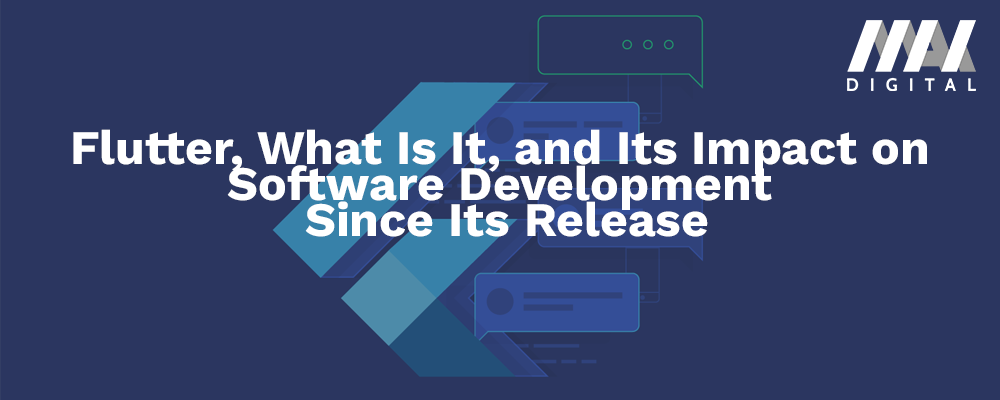Software development has changed dramatically over the past decade. Developers now face more platforms to support, more devices to accommodate, and tighter deadlines than ever before. But the tools have gotten better too. Cross-platform development has evolved from a compromise into a legitimate strategy, and Flutter sits at the center of that shift.
What This SDK Actually Does
Flutter is an open-source software development kit that lets you build applications for multiple platforms using a single codebase. Write your code once in Dart, and deploy it to Android, iOS, Windows, Linux, macOS, and the web. The apps look and feel native on each platform without requiring separate codebases.
The Flutter SDK includes everything you need: a UI framework, design widgets, a rendering engine, APIs, debugging tools, a compiler, and documentation. You’re not stitching together multiple tools—it’s a complete development environment.
Comparing Popular Cross-Platform Solutions
Flutter isn’t the first attempt at cross-platform development. Technologies like Xamarin, React Native, and Ionic have been around longer. But Google’s SDK achieves similar results with less complexity. Major products like Alibaba and Google Pay run on Flutter, proving it works at scale.
The key difference: it’s a complete SDK, not just a framework or library. It’s like getting an entire workshop instead of individual tools.
React Native Comparison
React Native remains the most popular alternative. It uses JavaScript, which gives it a major advantage—more developers know JavaScript than Dart. The learning curve is gentler, and both technologies have solid documentation.
But React Native doesn’t truly enable cross-platform development. It bridges gaps between native components, using different components for iOS and Android. Flutter uses the same components across platforms, making development faster. You write less platform-specific code.
Flutter has limitations though. It focuses on 2D applications. If you’re building AR or 3D products, React Native offers better support for those use cases.
Xamarin Comparison
Xamarin can be faster than Flutter for certain projects. But the licensing costs hurt. Xamarin requires Microsoft Visual Studio IDE, which isn’t cheap. Flutter works on VS Code, which is free. That cost difference matters, especially for smaller teams or startups.
Flutter handles complex projects better despite using a simpler language. The SDK includes testing and CI/CD tools built in. Dart is more powerful and efficient than XAML and C#, the languages Xamarin uses.
Microsoft deprecated Xamarin in 2022, replacing it with .NET MAUI. Google continues investing heavily in Flutter. If you want stability and long-term support, it’s the safer bet.
Ionic Comparison
Ionic is another open-source option for cross-platform mobile development. It uses HTML, CSS, and JavaScript—familiar technologies for web developers. That makes Ionic easier to pick up than Flutter if you’re coming from web development.
But Flutter apps deliver better performance. Ionic renders through web technologies, which creates lag. Flutter compiles to native code, resulting in smoother user experiences.
Flutter code is bulkier, making apps larger than Ionic equivalents. But it’s easier to maintain. Debugging and fixing issues in Flutter is straightforward. Ionic often requires complete rewrites for major updates or bug fixes.
The Impact on Development Workflows
Google released Flutter in May 2017. Dart, the language it uses, launched in 2011 but didn’t gain traction until Flutter paired with it. Together, they changed how developers think about building for multiple platforms.
The technology started for mobile but expanded to desktop and web. Google’s engineering team continues pushing its capabilities. “Flutter is highly portable and already works on many form factors beyond phones,” says Eric Seidel, Engineering Manager at Google.
The speed advantage is real. According to JetBrains surveys, 43% of app developers work on cross-platform projects. Flutter lets them code for iOS, Android, web, and desktop simultaneously. That saves months of development time and cuts costs significantly.
The framework also fits the low-code movement. Tools like Adobe XD export designs directly to Dart code, reducing the time spent translating mockups into working interfaces. This speeds up the design-to-development handoff.
Google released 3.0 and Dart 2.17 in 2022, adding support for foldable phones and game development. In 2023 and 2024, they continued expanding platform support and improving performance. Google is clearly committed to the technology’s future.
Conclusion
Flutter won’t replace every development tool, but it’s proven itself as a serious option for cross-platform development. The combination of performance, development speed, and Google’s ongoing support makes it worth considering for new projects.
Whether it remains dominant or gets replaced by something better, it’s already influenced how developers approach multi-platform development. The expectation that you should write once and deploy everywhere isn’t going away. Flutter made that expectation realistic.






